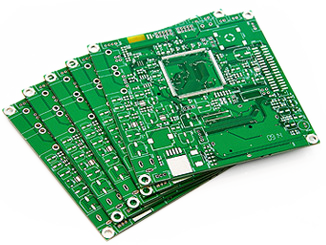
It is sold in two forms: either in the form of crystals that have a very strong reddish-brown color or in the form of an iron perchloride solution where it has already been diluted with water. In both ways, you should ALWAYS store it in tightly closed plastic containers. If you buy it in the form of crystals, you should dilute it with water. Do this very carefully using water at natural temperatures and following your supplier’s instructions for proper water quantity. Be careful as the dilution process is highly exothermic and will release a good deal of heat. It is common for the container to get very hot during the process. In this case, make sure that the container where you are doing the process is not too thin. Once diluted, allow it to cool to use for corrosion. Actually perchloride works best when heated, but in our case, we will be conservative and use it at room temperature (it’s safer too). For PCB manufacturing this is important now.
- Since perchloride is a “darn” product, I like to drill a small hole in the plate and thread it there to be able to place and remove the plate from the container where corrosion will occur. The only thing you can’t do is use some metal instruments (tweezers, pliers, etc.) for this task. With the solution prepared and the diagrammed board, simply place it in the perchloride container. The ideal position for corrosion is with the copper side down, or sideways. Thus, gravity helps to deposit material that is being removed from the plate. That done, just wait for the corrosion to happen.
Incomplete Corrosion Printed Circuit Board
With the new solution, the process should take no more than 15 minutes. As it is reused, it takes longer. When taking longer than 40 or 50 minutes, discard the liquid and make a new one. The best way to check how the process is doing is by doing a visual inspection. You do not want the corrosion to be incomplete because you have not left the plate in the perchloride long enough. But you also don’t want the corrosion to be too aggressive and damage the tracks because you left the plate for too long in the perchloride. If the plate is left in the container for a long time it is possible that the protective paint will gradually come out and this will cause where corrosion should not happen also be attacked. Corrosion is complete when all copper that was not covered by protective paint has been removed.

PCB being washed after corrosion process
With complete corrosion, remove the plate from the container and wash it with water. You can leave a second container filled with water prepared for this. After rinsing the plate in the water to remove any remaining perchloride, you can move on and wipe off any remaining copper paint. To remove the paint use some solvent such as acetone or nail polish remover. She will leave quickly and leave exposed. If you feel it is necessary to wash the plate with soap and a bushing (those of plastic foam) to make it very clean. Rinse the plate again with water and dry it with paper towels or a cloth.
